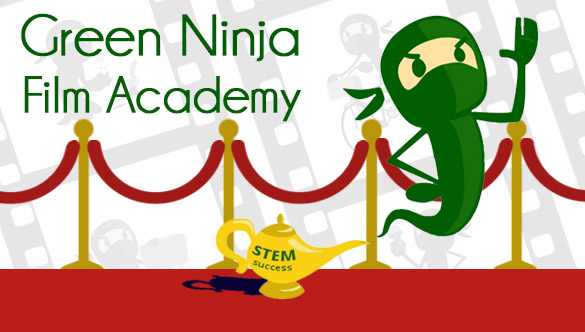
Biological sciences majors Bianca Opara, left, and Dania Abid share their findings at the College of Science Student Research Day.
On May 6 at the 12th Annual College of Science Student Research Day more than 60 undergraduate and graduate students presented work from a variety of disciplines.
Bianca Opara, ’18 Biological Sciences, and Dania Abid, ’17 Biological Sciences, both worked in Professor Shelley Cargill’s hands-on physiology lab. Abid wants to pursue a medical degree, while Opara is interested in combining research and medicine. At the recent event, they presented the process they are using to discover the effects of a high-fat diet on follicle count ratios in mice.
Opara, who is part of the Research Initiative for Scientific Enhancement (RISE) Program, said she was first approached by program director Karen Singmaster when she was a sophomore. While Opara was at first hesitant to join the program due to timing, she decided to take Singmaster’s advice to apply when she heard from other students involved in RISE.
“I am so excited they let me in,” she said. “It helped me figure out that I like hands-on procedures.”
Carlos Rojas, ’16 Geology, with a minor in Business, used connections near his hometown of Hollister to gain access to private property for geochemistry research on the Quien Sabe volcanics of west Central California. His faculty advisor Ellen Metzger and other student researchers had completed an analysis of areas north and south of the spot he studied.
Rojas, a Marine Corps veteran, said he has loved rocks since he was a kid and was interested in learning how the landscape was created.
“It was really exciting, exploring the area and finding new results,” he said. “It is a beautiful area.”
Organic Chemistry Professor Roy Okuda has helped to organize the Student Research Day each year since its inception. He said it originally started because he realized many students were attending off-site meetings to present their posters but the work wasn’t being shared on campus. Its location in the breezeway of Duncan Hall allows lower division students to mingle with upper division and graduate students between classes.
“It gets so busy and so noisy with everyone talking,” Okuda said. “We learn a lot. Sometimes we don’t realize everything that is going on in the college.”
The College of Science event is one of many on campus that highlights the benefits to both students and faculty members of working together on research, scholarship and creative activity, a high-impact practice that is highlighted inSJSU’s Four Pillars of Student Success student engagement pillar.



